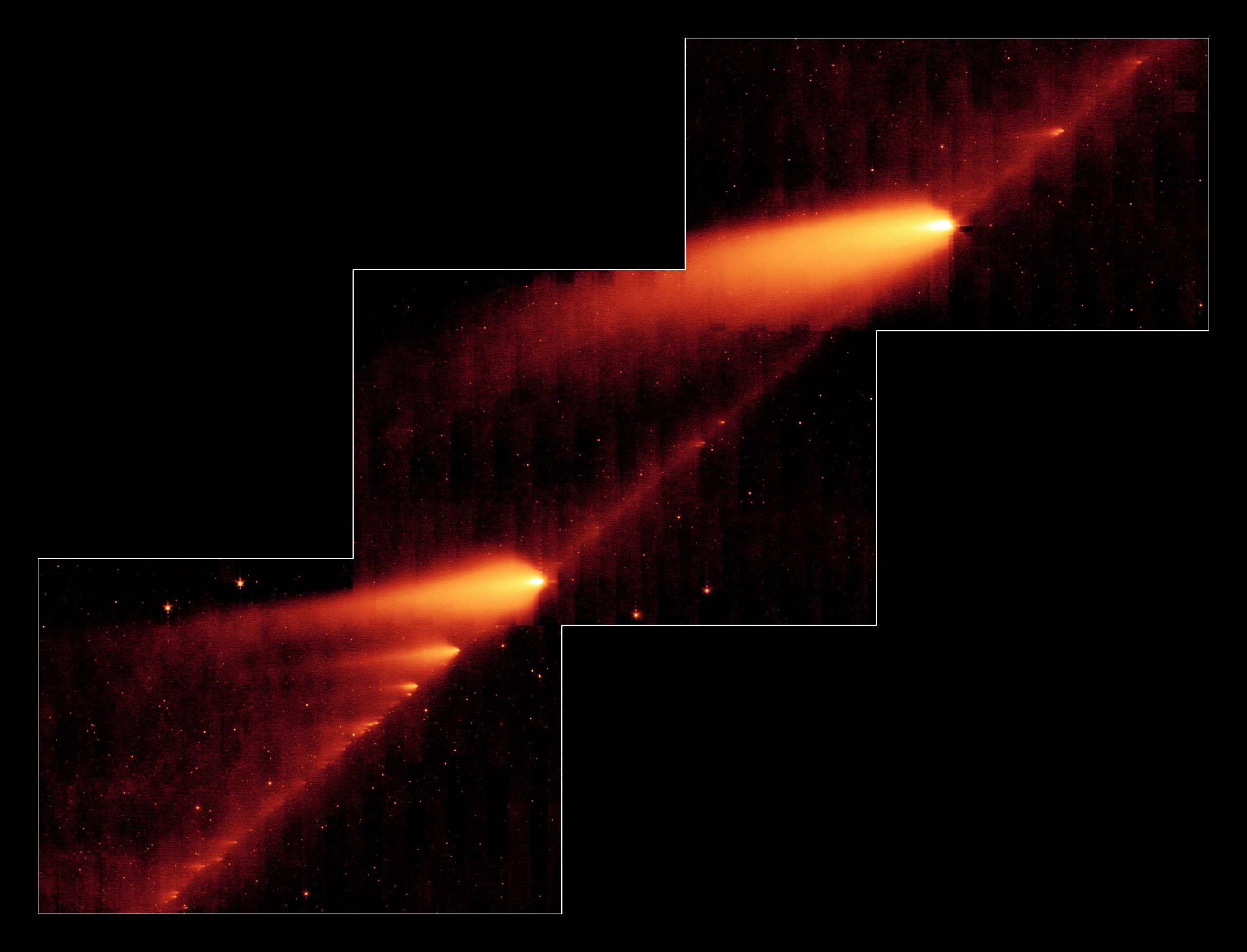

This infrared image from NASA’s Spitzer Space Telescope shows the broken Comet 73P/Schwassman-Wachmann 3 skimming along a trail of debris left during its multiple trips around the sun. The flame-like objects are the comet’s fragments and their tails, while the dusty comet trail is the line bridging the fragments. Credit: NASA
Astronomers are excited about the possibility of a new meteor shower on May 30-31, the tau Herculid shower, forecast to peak on the night of May 30 and early morning of May 31.
Back in 1930, German observers Arnold Schwassmann and Arno Arthur Wachmann discovered a comet known as 73P/Schwassmann-Wachmann, or “SW3, which orbited the Sun every 5.4 years. Being so faint, SW3 wasn’t seen again until the late 1970s, seeming pretty normal until 1995, when astronomers realized the comet had become about 600 times brighter and went from a faint smudge to being visible with the naked eye during its passage. Upon further investigation, astronomers realized SW3 had shattered into several pieces, littering its own orbital trail with debris. By the time it passed our way again in 2006, it was in nearly 70 pieces, and has continued to fragment further since then.
If it makes it to us this year, the debris from SW3 will strike Earth’s atmosphere very slowly, traveling at just 10 miles per second – which means much fainter meteors than those belonging to the eta Aquariids. But North American stargazers are taking particular note this year because the tau Herculid radiant will be high in the night sky at the forecast peak time. Even better, the Moon is new, so there will be no moonlight to wash out the faint meteors.
“This is going to be an all or nothing event. If the debris from SW3 was traveling more than 220 miles per hour when it separated from the comet, we might see a nice meteor shower. If the debris had slower ejection speeds, then nothing will make it to Earth and there will be no meteors from this comet,” said Bill Cooke, who leads NASA’s Meteoroid Environment Office at NASA’s Marshall Space Flight Center in Huntsville, Alabama.
All the excitement from astronomers and the public has sparked a lot of information about the tau Herculids. Some has been accurate, and some has not.
We get excited about meteor showers, too! But sometimes events like this don’t live up to expectations – it happened with the 2019 Alpha Monocerotid shower, for example. And some astronomers predict a dazzling display of tau Herculids could be “hit or miss.”
So, we’re encouraging eager skywatchers to channel their inner scientists, and look beyond the headlines. Here are the facts:
- On the night of May 30 into the early morning of May 31, Earth will pass through the debris trails of a broken comet called 73P/Schwassmann-Wachmann, or SW3.
- The comet, which broke into large fragments back in 1995, won’t reach this point in its orbit until August.
- If the fragments from were ejected with speeds greater than twice the normal speeds—fast enough to reach Earth—we might get a meteor shower.
- Spitzer observations published in 2009 indicate that at least some fragments are moving fast enough. This is one reason why astronomers are excited.
- If a meteor shower does occur, the tau Herculids move slowly by meteor standards – they will be faint.
Observers in North America under clear, dark skies have the best chance of seeing a tau Herculid shower. The peak time to watch is around 1 a.m. on the East Coast or 10 p.m. on the West Coast.
We can’t be certain what we’ll see. We can only hope it’s spectacular.